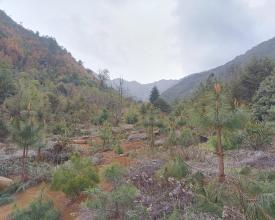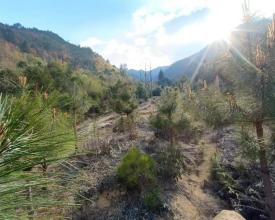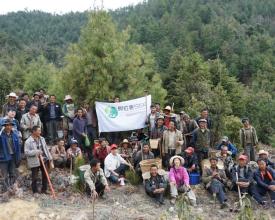A village safeguarding a natural botanical garden: Xinzhu Botanical Garden of Hengduan Mountain

Xinzhu Botanical Garden of Hengduan Mountain was named so by botanists who had long conducted research in the Xinzhu village forest, paralleling the upper stream of the Yangtze River. It is a home to most of the plant species found in Hengduan Mountain, Southwest of China. However, the garden was severely degraded and many species were on the verge of extinction due to large-scale logging and over-exploitation over the past decades. A project was launched in 2017 to empower villagers to become a primary force for conserving, restoring and sustainably using the forest resources. A community-led patrol team was then set up. Villagers participated in the baseline survey led by botanists. With a greenhouse built to nurture genuine plants, restoration of in situ protection is carried out. Villagers’ engagement helps raise their awareness and ownership of the village forest. Eco-friendly livelihoods are promoted by providing training to villagers who breed Himalayan bees and plant endangered herbal medicines to raise incomes.
Context
Challenges addressed
Location
Impacts
The voluntary daily patrolling has curbed poaching and illegal logging over the 10sq-km village forest.
With a baseline survey, 175 major plant species were identified, and more than 100 specimens and 55 species of germplasm resources were collected. A handbook of rare, endangered and genuine plants has been compiled and published.
Villagers were organized to conduct reforestation since 2018, a total of 12,000 saplings of local species having been planted as in situ protection.
About 10 kinds of indigenous medicinal plants are promoted for planting by villagers, which becomes a sustainable source of income for villagers.
Villagers are trained to keep Himalayan bees, an endangered Chinese bee, which increases incomes with honey brewed from wild flower nectar and pollen.
With the help of environmental NGOs, government and community mutual assistance, villagers have gradually substituted firewood with increased electricity energy. Traditional forest-depleting livelihood is being steadily transformed to an eco-friendlier one, with sustainable use of forest resources.
Biodiversity of the forest is recovering, and creek continues to provide plenty of clean water for the village, even in drought. The villagers have become steward. They have all the incentives to safeguard the botanical garden, which in return provides the community necessities for sustainable livelihoods.



